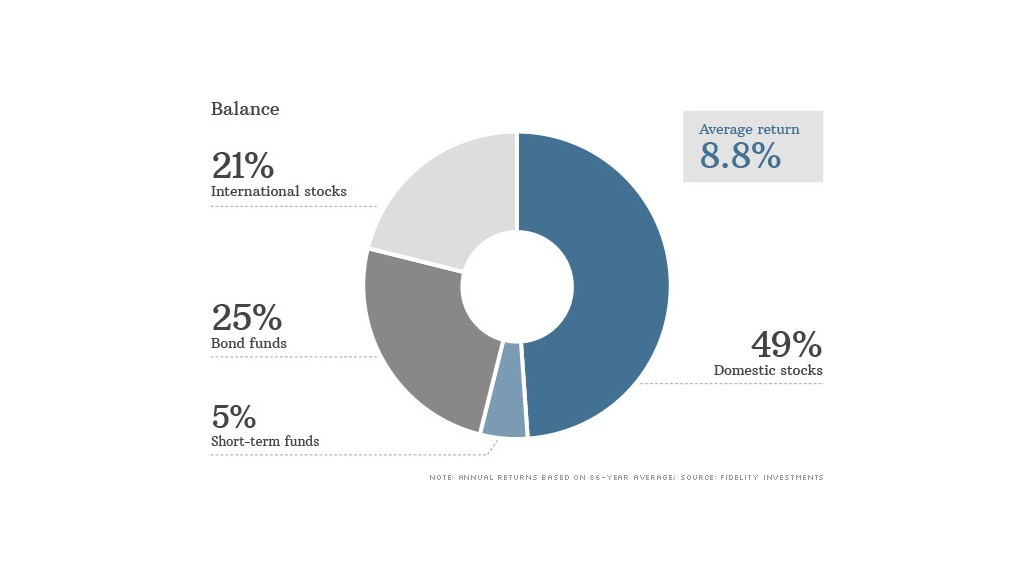Asset Allocation How Spreading the Love Will Save Your Portfolio
Post on: 9 Июнь, 2015 No Comment

Recent Posts:
Asset Allocation How Spreading the Love Will Save Your Portfolio
One fairly obvious goal you as an investor should have is maximizing the value of your portfolio and one of the most important steps to get there is allocating financial resources across multiple asset classes.
Asset allocation can help you achieve the returns you expect while minimizing the kinds of risk that can erode a portfolios long-term performance. The most common asset classes for typical investors include stocks, bonds, cash and alternative investments such as commodities, real estate and currencies.
If you allocate capital to specific asset classes and strategies, youll create a diversified basket of securities that can withstand most markets.
Of course, theres a few things to consider when trying to decide how you want to go about building your portfolio:
Risk
Before evaluating your own asset allocation strategy, you have to determine the amount of risk youre willing to assume, as well as your financial goals. In general, the higher level of return you want to achieve, the higher your risk appetite probably will have to be. For example, you can get 20% returns out of stocks every year, but the risk of loss is substantially higher than, say, money market funds, which are relatively safe bets but can only generate a couple percentage points of annual returns.
Thus, your goal should be to allocate your capital to a basket of different assets that, when put to together, will achieve your investment goals in most market environments.
Also, time is a factor younger investors generally will be able to tolerate greater risk than older investors, as time is on their side, and losses can be made back over a number of years. As a good example, just look to the financial crisis investors who lost money in 2008-09 made their money back (and more) if they stuck around the market over the next five-plus years but many investors pulled out what funds they had left because retirement was only a year or two away, and they were afraid of losing even more.
Allocation Management
Applying asset allocation techniques to a portfolio is a form of risk management and will help decrease an investors portfolio risk when market conditions change.
For example, during periods of economic contraction, the value of your stocks likely will erode. But a portfolio that has a percentage of its funds allocated to bonds likely will have some protection from that erosion in the form of an increase in the value of bonds, which tend to outperform stocks during weak economic conditions. (On the flip side, when an economy expands very quickly, bonds usually underperform, as the Federal Reserve starts the process of raising interest rates to fend off unwanted inflation.)
For another example, higher interest rates can also be harmful to stock prices, but a portfolio that has an allocation to commodities will outperform as oil and gold generally perform well during a rising-rate environment.
Diversification
A diversified portfolio is one that not only contains a robust mix of assets, but also some differentiation within those asset classes.
The key is to identify securities that may perform differently under different market conditions. For example, where growth stocks might outperform during strong periods of economic expansion, consumer staples (such as companies that make toothpaste) will outperform during economic contraction. And within, say, consumer staples, you might want to consider buying companies that produce differing products rather than, say, nothing but beverage companies.
Bond investors should purchase a number of different maturities including short-, intermediate- and long-term bonds. Investors also should diversify by buying different issuers such as federal government bonds, municipal bonds, corporate bonds and junk bonds.

Altering Allocations
Most investors will stick to a specific allocation, then change their basket as they get older. However, some investors will change their allocations based on their view of the market but allocation really should be based on an investors long-term financial goals.
Instead, depending on the market environment, you might consider changing what youre holding within an asset class, rather than change how much money you have invested in a particular asset class. For example, if youre worried that stock prices will move lower, you might be better off changing the balance of your stock diversification to favor more defensive consumer staples rather than more risky tech stocks as opposed to moving your allocation to cash.
Rebalancing
Rebalancing is the process of resetting the allocation of a portfolio back to its original allocation. Why would you do this? Because sometimes the makeup of your portfolio can change not by your own hand, but just thanks to improvements or declines in certain parts of the market.
For example, lets say you have a $100,000 portfolio that is 60% dedicated to stocks, with the remaining 40% stuck in bonds. Then lets say the stock portion grows by 20% while bonds remain flat if thats the case, your portfolio will be $72,000 in stocks and $40,000 in bonds, making it 64%/36% stocks to bonds.
That makeup might be too aggressive for you, however, so to rebalance your portfolio, you might sell off some of your stock winners and reallocate the money back into bonds, bringing it back to a 60%/40% mix.
Bottom Line
The advice dont put all your eggs in one basket, while cliche, should be heeded. You should seek out the right mix of assets stocks, bonds, alternative investments and even cash to weather difficult market environments and achieve your long-term goals.














